The Stories We Wear
Cathy Koos
Through June of 2022, the museum at the University of Pennsylvania in Philadelphia is hosting a thought-provoking collection of 2500 years of style and adornment.
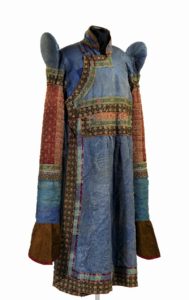
U Pennsylvania Museum, Mongolian woman’s garment
Why thought provoking? Consider this: each time we put on clothing, we are putting on a performance as we present ourselves to the world by the garments we wear. We can recognize religious affiliation instantly when we see a Catholic nun in her black and white habit and a priest by the white collar. We identify Amish or other Plain People by their head covering and simple dress, often without frivolous zippers.
Our favorite football team is immediately identified on the field, even in a scramble of bodies. We can differentiate between and soldier and a sailor by their uniform style and color. Or the Queen and her Sea Lord.
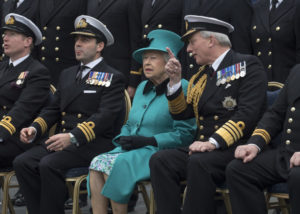
Twitter, Queen Elizabeth II and the First Sea Lord, Adm Sir P Jones
We generally won’t be wearing a ball gown to settle in on the couch or jeans and a t-shirt to a formal event. Ceremony is important in most cultures and care is taken when choosing not only garment, but accessories as well.
My first career in the high tech world of the Bay Area saw me wearing high heels and a conservative “banker’s suit.” My second career as director of a fire prevention agency frequently saw me wearing jeans and hiking boots as I worked out in the field. Dressing up for that job was khakis and a shirt with buttons.
We only have to think about the recent plethora of red ball caps to realize that color makes a difference, as well. In the American Revolutionary war, and many other conflicts, uniform color tells us the good guys from the enemy. Color was very important to George Washington as he attempted to clothe his troops in a world of ever-diminishing woolen cloth. The British embargo cut off woolen cloth supplies so many colonial supporters began holding back their raw wool exports to England and were, instead, spinning and weaving woolen cloth in their own homes.
Woolen cloth was so dear during the revolution that clever alterations were made to the soldiers’ uniforms so as to stretch the cloth resources. Cuffs were no longer doubled; collars and button plackets were lined with other, more available cloth.
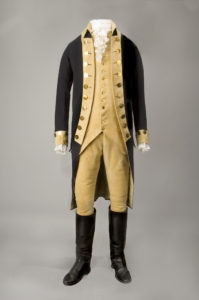
Uniform, worn by George Washington. AF*16148M, AF*16149, AF*16150.
As weapons became more accurate, padded garments became the precursor body armor to bulletproof vests. One garment on display in Penn’s exhibit is a 1800s vest created from the husks of “a thousand coconuts.”
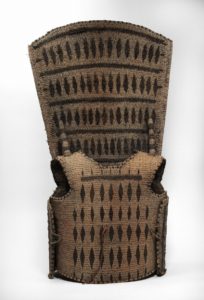
Coconut fiber body armor, U Pennsylvania P3294B
Even tattoos are considered body adornment, and the proliferation of tats is truly amazing. Be brave and ask the next person you see what their tattoos mean and be ready to be amazed!
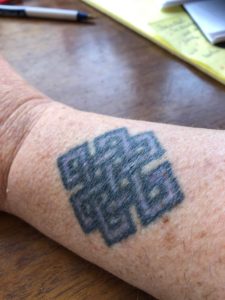
photo, C Koos